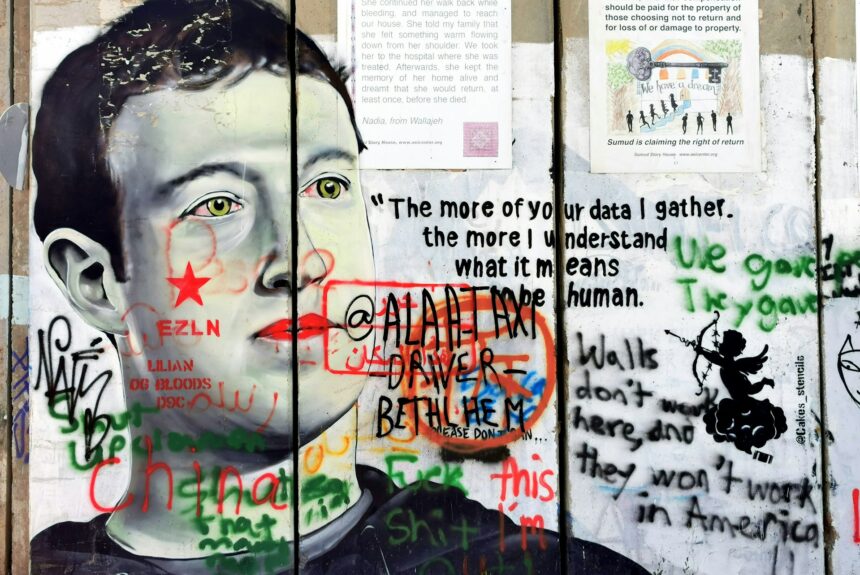The FTC-Meta trial is in the judge’s hands right now. The case is a monopoly case. The FTC asserts that when Meta was Facebook, Facebook purchased Instagram and WhatsApp at excessive prices so Facebook would not have to compete with these two very popular social media platforms. In other words, according to the article in The New Times, Facebook wanted to “kill its competition.” These actions by Facebook, according to the FTC, violate a Federal law, Section 2 of the Sherman Antitrust Act.
Bloomberg writes:
“Lawyers for Meta argued that its offerings have evolved significantly since Facebook’s founding, and since it acquired Instagram and WhatsApp, to include products that expand its list of competitors. While the FTC includes Snap Inc.’s Snapchat as a competitor, it doesn’t include products like TikTok and YouTube, or Apple Inc.’s iMessage.”
Justin Teresi, an antitrust analyst with Bloomberg Intelligence, believes this evolution works in Meta’s favor by naturally reshaping the competitive landscape.
Why is this a brand-related issue? Meta, Facebook, WhatsApp, and Instagram are big brands, and there are some very important brand management issues at stake.
This article is part of Branding Strategy Insider’s newsletter. You can sign up here to get thought pieces like this sent to your inbox.
The FTC defines Meta as part of the “social networking market focused on connections between friends and family.” According to The New York Times, the judge in the trial, Judge James E. Boasberg, said that the critical issue is defining social media networking.
Judge Boasberg is correct: defining social media networking—or, as the FTC writes, the social networking market—is an issue. However, underlying his task are two hugely important brand issues: how to define a market and how to define competition in that market.
We can only hope that the parties in the trial use definitions of competition and market in ways that actually reflect how consumers behave. If anything, monopoly cases are about the lack of consumer freedom of behavior due to a lack of available options, resulting from a company’s limited options.
But let’s get back to defining a market and brand competition within that market.
What is a market?
A market is not a product category. For example, there is no such thing as the automotive market, nor is there such a thing as the cola or pet food market. A market is not a geography. There is no such thing as the French market, the Japanese market, the Italian market, or the Common market. Geographies are where markets exist. Geographies are how you organize to deliver the brand promise to the market.
A market is a want.
There is no lip gloss market; there is no mascara market. But, there are wants for attractiveness, -for youthfulness, for status and for elegance. A market is a want. If there is no want, there is no market. If the “want” is incorrectly defined, the market is incorrectly defined.
A market is not a distribution channel. A distribution channel is how you reach the market, not the definition of the market. There is no such thing as the warehouse store market, the department store market, or the supermarket market. We do not design brands for channels. We design brands for people, people with a want. If there are no customers, there is no market share. Market share needs customers to be viable.
A market is people with a want. If it is a global want, there is a global market. If it is a growing want, it is a growing market. If some people in Italy, some people in France, and some people in Australia share the same want, then they are in the same market. It just happens that they live in different places. But if two teenagers living next door to each other in Paris have different wants, then these teenagers are in different markets.
Many companies and government agencies compute market share based on geographies, categories, channels, and price points. Category share, geography share, channel share, and price point share are not market share. These reflect what the manufacturer desires, not what the customer desires. Looking at markets in terms of channels or geography affects how businesses analyze their data, manage their business, and operate.
According to The New York Times, the FTC defines Meta’s market as connecting with family and friends. This was probably true at the time of the acquisition.
However, a market is not defined simply by the “need,” in this case, connecting with friends and family. Who connects with friends and family? Everyone with a family? Everyone with a friend? Did Instagram and WhatsApp have different “whos” connecting with friends and family? And what was the context for the “connecting with friends and family”?
To establish the definition of the market, all three—who, why, and context (how, when, where)—must be defined. Within that market, the customer defines the brand alternatives.
What market is the FTC v. Meta Platforms case actually considering? Perhaps the markets of ten years ago have changed. Is the case defining the market of 2014 or 2025?
Within each market, specific customers with specific needs and contexts have specific brands that satisfy those needs. Those brands compete. Competition happens within a market. Define the market first, then capture the customers’ definition of the competition.
Decades of research indicate that when considering brands to buy or use, customers create a “competitive set.” That competitive set usually contains three brands. The brand’s goal is to be the preferred brand in that competitive set. Think of this competitive set as a short list. Short-list brands are defined as the small set of brands that are among the customer’s top three choices. Being on the short list is good, but it is not good enough to be a truly strong brand. It is better to be the preferred alternative within the short list.
Preference leads to brand loyalty. Brand loyal customers are very valuable customers. They are willing to purchase their favorite brand even when the second-choice brand costs 5% less.
Here is the critical fact: customers define the competitive set. Brands do not define competitive sets. Nor do government bodies. Asking a brand leader or an FTC analyst what the brand’s competitive set is is worthless information. Customers define the competition. Does the Federal Trade Commission v. Meta Platforms case look at what customers considered as competition at the time of Facebook’s purchase? Is the current customer’s perceived competition data considered in the arguments? Is the customer competition defined within the defined market?
Facebook became a larger factor in social media communications with its 2012 and 2014 purchases. It did control a vast swath of social media.
However, size may not be a factor for a customer when selecting a brand. IBM was the biggest computer company, and Apple was the most popular brand. Electrolux may have been one of the largest, most well-known brands in vacuums, but Dyson was the most popular. When a customer wants a vehicle large enough to transport kids to after-school activities but also nice-looking, the customer’s competitive set may include SUVs, wagons, and minivans.
It is so interesting to read the trial reporting on competition.
Meta paid an expert to track the usage of individual social media apps. The expert paid some of the participants for every hour they did not use Facebook, Instagram, and WhatsApp to see which social media options they chose. This is an approach. But, paying respondents to behave in a way that may support your cause seems somewhat sketchy.
Meta asked a professor from the Booth School of Business (University of Chicago) to testify about Instagram at the time of the acquisition. He testified that Instagram was having trouble generating revenue. If Instagram had not been purchased, it is possible that Instagram might have died on its own account. In fact, when a competitor is weak, your brand’s odds of making share growth and quality revenue growth are increasingly better.
During the 2003-2005 McDonald’s turnaround, Burger King’s weakness was a huge plus. It offered McDonald’s a lot of wiggle room.
As stated, the case is now in the judge’s hands. But here are some things for you to consider.
- Is “social media networking” a market or a channel?
- Is “social media networking” a need?
- Is “connecting with family and friends” a market or is it solely a need? Who are these people who want these connections? How, when, and where do they use these connections?
- What is the customer-perceived competition for Facebook, Instagram and WhatsApp with each market Meta does business?
- Depending on the identified markets in which Meta does business, is Meta’s size a factor in customer-perceived competition?
- If Instagram was in such bad shape, as an expert testified, did Facebook need to purchase it rather than let it linger?
Contributed to Branding Strategy Insider by: Joan Kiddon, Partner, The Blake Project, Author of The Paradox Planet: Creating Brand Experiences For The Age Of I
At The Blake Project, we help clients worldwide, in all stages of development, define and articulate what makes them competitive at pivotal moments of change. This includes pricing strategies that propel their businesses and brands forward. Please email us to learn how we can help you compete differently.
Branding Strategy Insider is a service of The Blake Project: A strategic brand consultancy specializing in Brand Research, Brand Strategy, Brand Growth, and Brand Education
Post Views: 27










